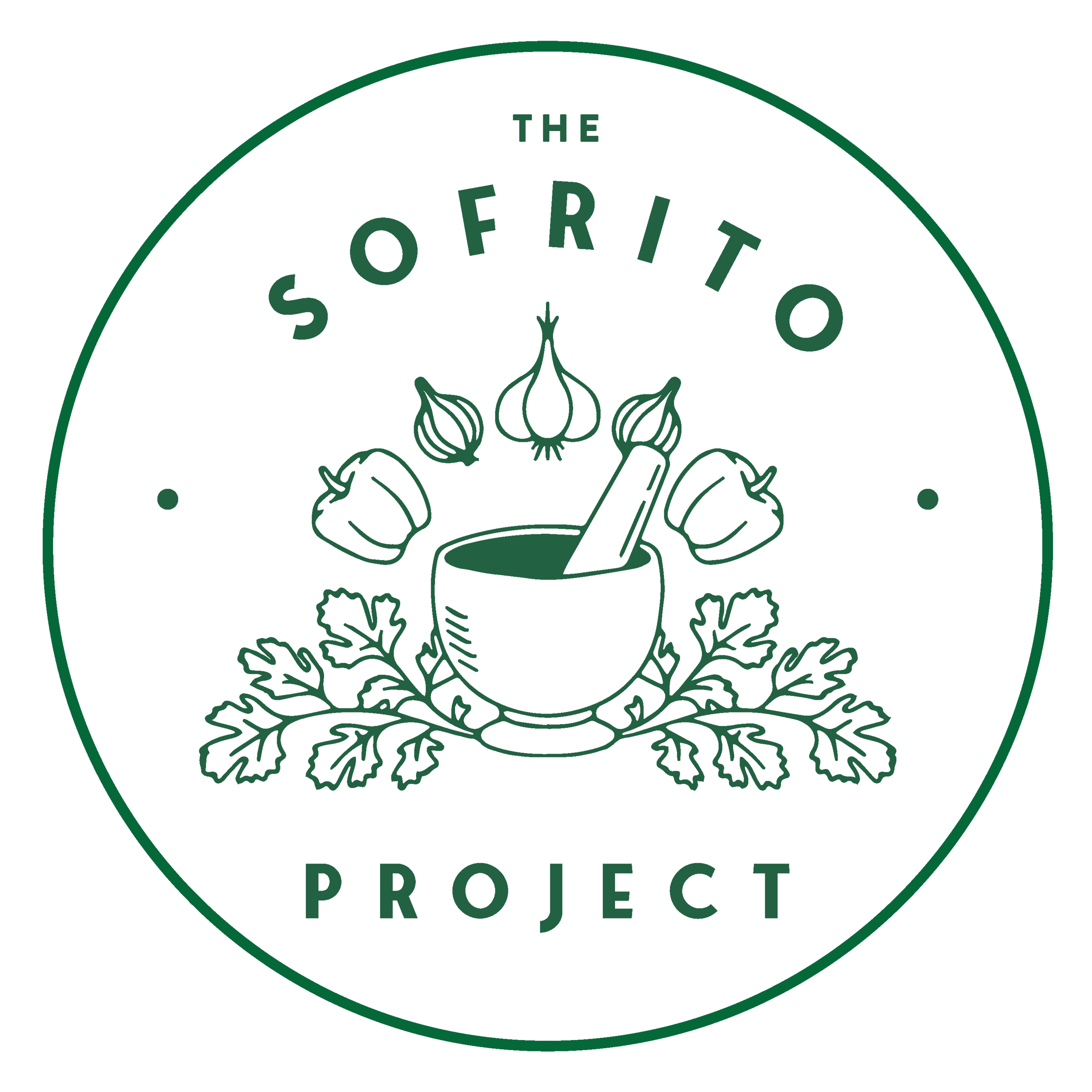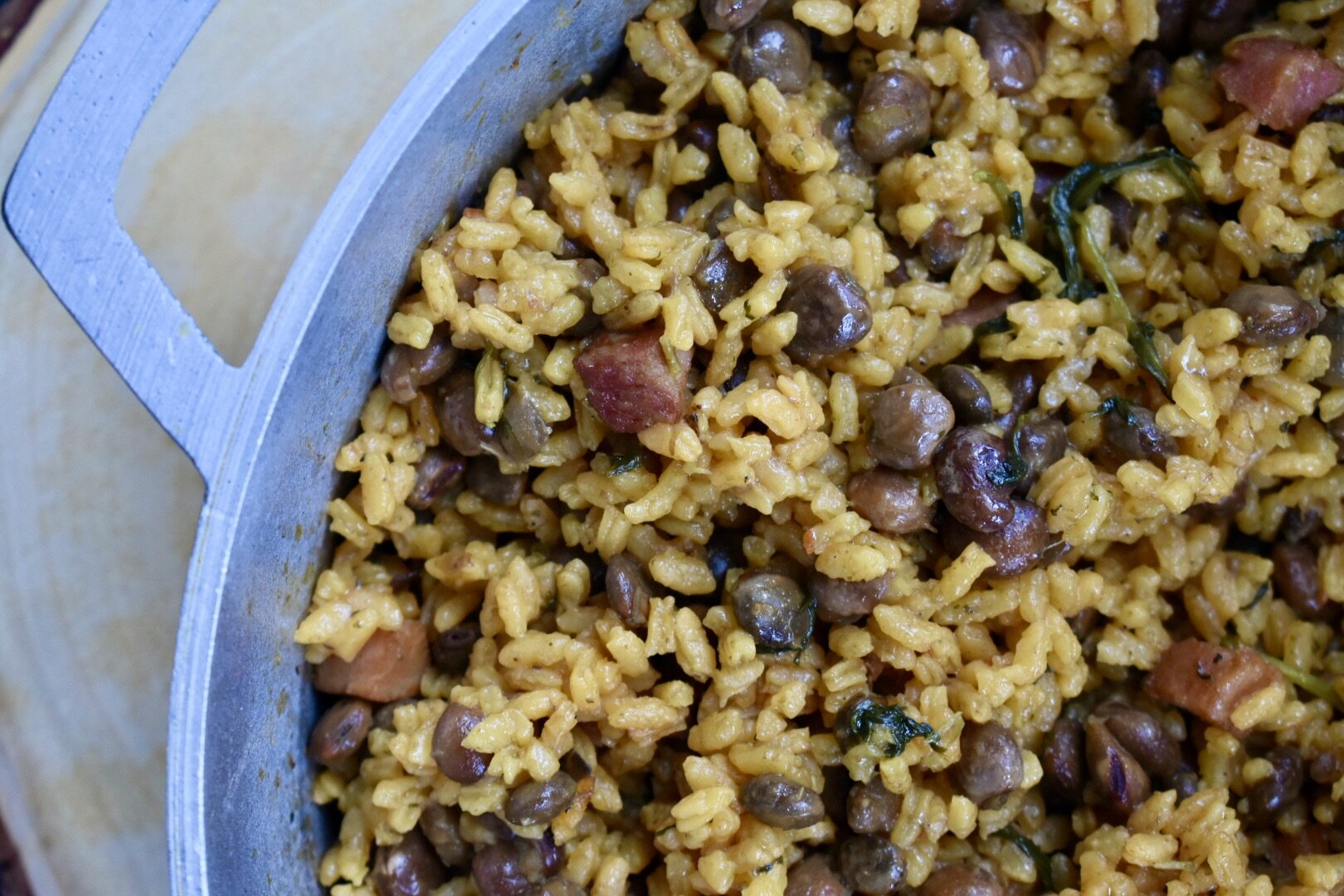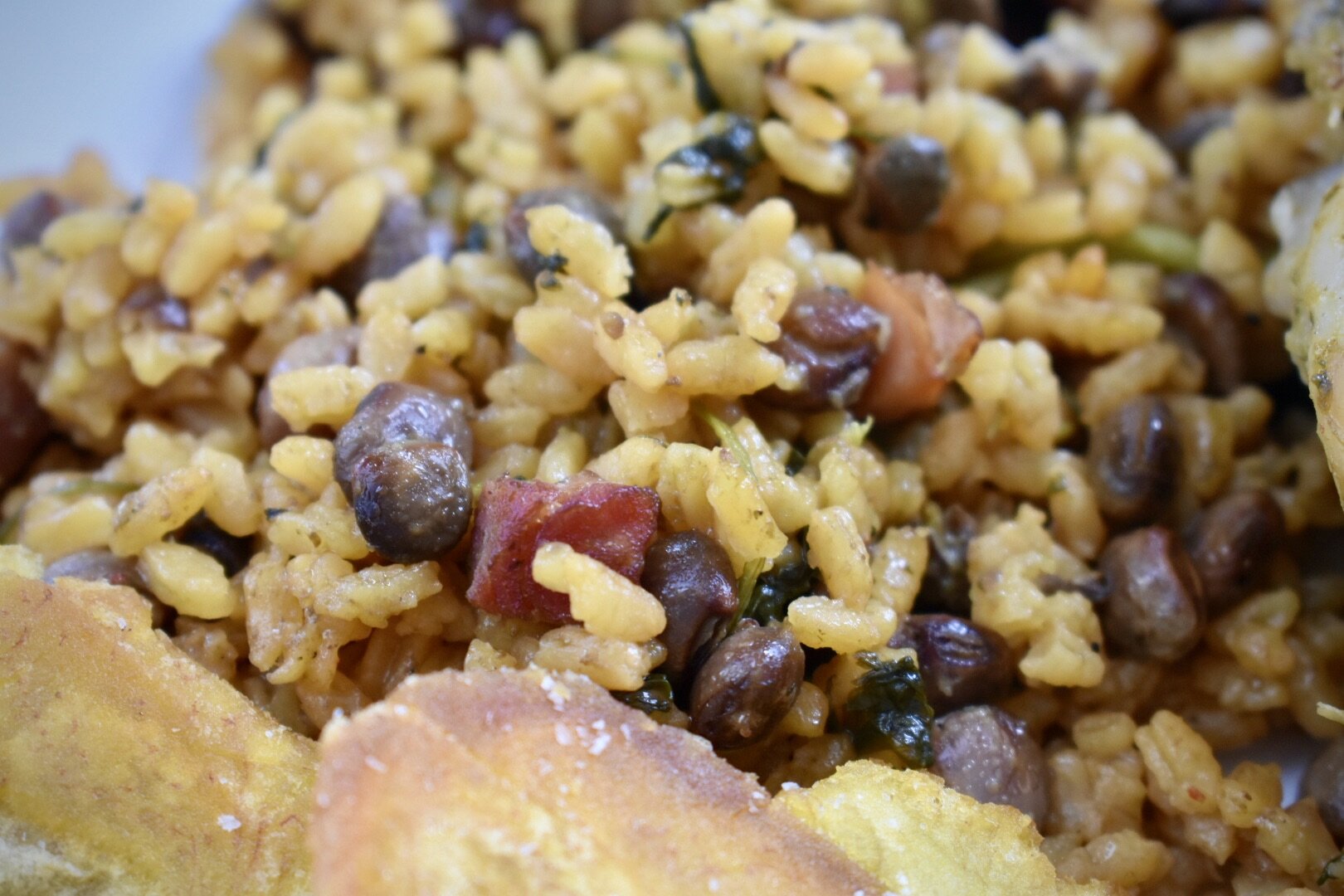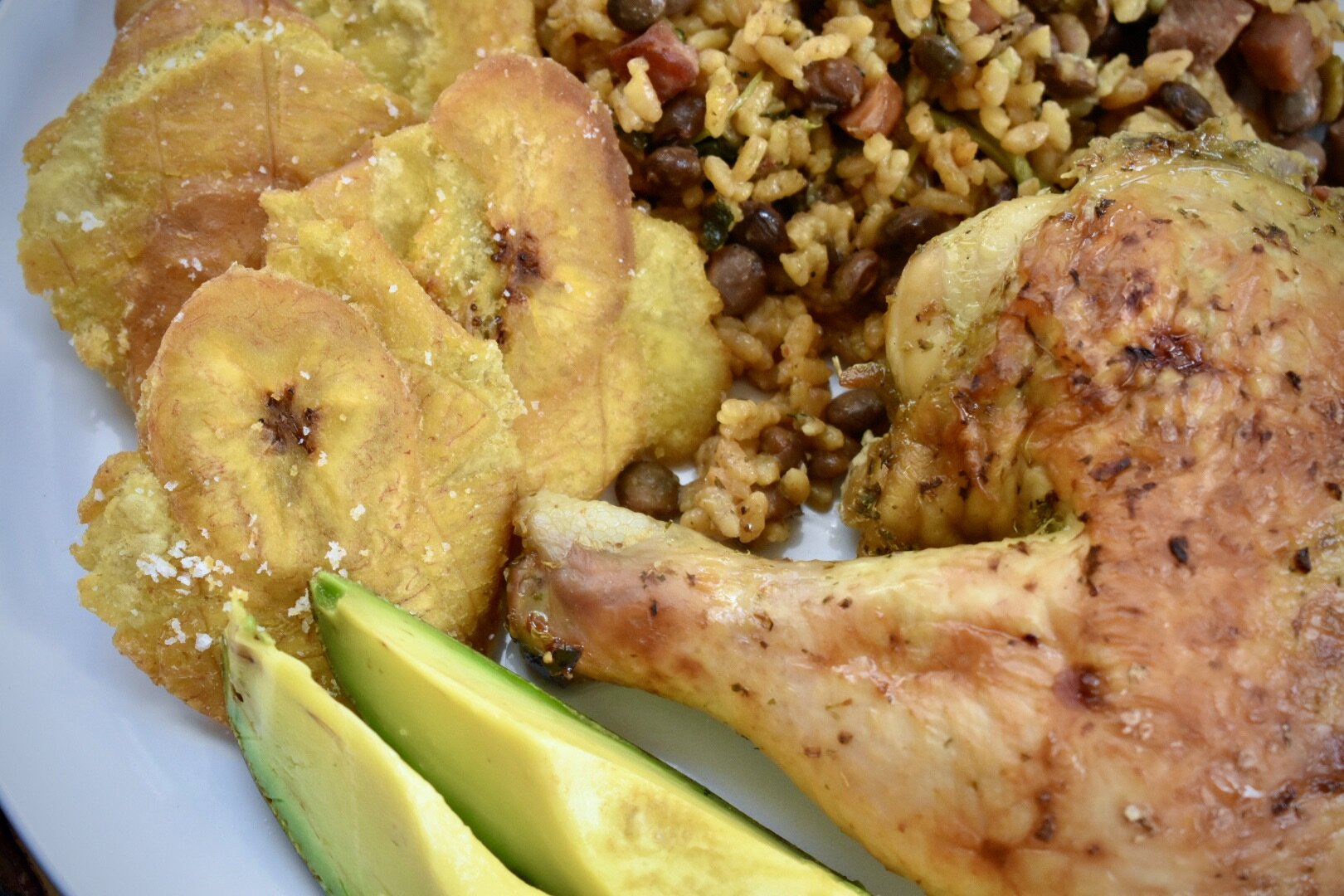Arroz con Gandules (Puerto Rican Rice with Pigeon Peas)
Arroz con gandules is what I consider to be true, Puerto Rican comfort food. Savory, fluffy grains of rice with stewed pigeon peas. In my opinion, my mom makes THE best rice. And I'm not saying this because I'm biased about my mother's cooking (honestly, we all are) but I'm saying this because we have family and longtime friends (both on the island and stateside) that will only eat arroz con gandules if it's made by Mom; they won't even try anyone else's. They'll go months without eating it just to get Mom's dish on Christmas Eve. It's that serious. But to me? Arroz con gandules is Christmastime. We have this rice on holidays and special occasions and we often make an effort not to have any leftovers when we make it.
This particular recipe I'm sharing is going to be my "I've been working all day and still have to cook dinner when I get home" version that I've adapted from my mom's recipe. No salted pork cuts, no super slow all-day cooking, and no banana leaves to steam the rice. Because of that, it's easily a vegetarian and/or vegan dish if you chose to have it alone and omit the ham or bacon. The all-out fancy version of our rice gets saved for Noche Buena (Christmas Eve) dinner every year. But throughout the rest of the year, we stick to this quick version!
Pigeon peas can be found in the Latin food aisle in most grocery stores. Personally, I prefer either brands of Iberia or El Jibarito. And if you can find dry pigeon peas, you're in luck! You can pressure cook those bad boys and then pop them in the freezer and you'll have pigeon peas for months. My Dad ships me dried pigeon peas from Puerto Rico so I can do this.
Either way, after you have this rice, you'll see what the fuss is all about. Hopefully, you'll add this to your weeknight arsenal and have a newfound appreciation of the glorious pigeon pea!
Arroz con Gandules (Puerto Rican Rice with Pigeon Peas)
Cook time: 30 minutes
Serves 6-8 (or 4 if you freeze the leftovers)
Vegetable oil
3 tbsp Simple Sofrito
1/2 cup cubed ham or sliced bacon
2 tbsp capers, drained
1 large can (1lb 13oz) green pigeon peas, with liquid
1 tbsp sazón spice blend (homemade or store-bought, see note)
2 cups long-grain white rice (I prefer jasmine)
3 cups water or unsalted chicken broth
Kosher salt, to taste
Black pepper, to taste
Note: sazón spice blends vary with the amount of salt they contain, so season accordingly based on which kind you’re using. I prefer making my own blends that use less salt. You can support my work by purchasing them from Spice Tribe.
In a large stockpot, add enough vegetable oil to cover the bottom of the pan. On medium heat, sauté the cubed ham or bacon until most of the fat renders out. Next, add the Simple Sofrito and sauté for 4-5 minutes or until it starts getting nice and toasty. Add the capers and stir well.
Cook for another 2 minutes and then add the entire can of green pigeon peas with their liquid to the pot. Next, add the sazón seasoning. Stir and cook through for about 5 minutes; you want the gandules to release some of their starchiness and create a sauce for the rice.
Add the rice. Stir well to make sure all of the grains are covered with the stewed gandules and their sauce. Add the water and adjust the seasonings accordingly with kosher salt and pepper. I normally don't add too much salt to mixture since the capers and sazón are already slightly salty. Remember, you can always add salt but can't take it out of a dish. Now, here is where we're going to get a bit technical: the key to making great rice is to leave it alone! It's really that simple.
Once the water is added to the rice, stir once to make sure there aren't any clumps and then leave it be. Let the water reduce down until you see little pockets of bubbles forming on the top of the rice. I imagine them to be little holes of magma bubbling to the surface. It's quite relaxing to watch, really. But once you see these little bubble tunnels forming, and you see the bubbles coming up furiously, stir the rice from the bottom up, like you're folding it over itself, and fold it over just once.
If you stir it too much, it will end up getting mushy; which is fine if you're making asopao, but that's not the case here. Once the rice is folded over, turn the heat down to simmer and cover the pot with a tight fitting lid. Let it steam for 20 minutes. Set your timer and walk away from the stove. Don't open the pot, don't stir the rice, and don't do anything to it.
Right before you're ready to serve, fold the rice from the bottom up again and that's it. If you have little pockets of rice stuck to the bottom of the pot, don't fret. Those tasty, crunchy bits are called pegao (which literally translates to "stuck"). In Iran, it's called tahdig. Dominicans call it concón. And no matter the name, let me tell you, that's gold right there. We fight over pegao in the house, haha!
Serve the rice with tostones (twice-fried plantains) or maduros (sweet plantains) and a slice of avocado as a standalone meal. You could also pair the rice with a nice protein like roasted chicken or some pan-seared pork chops.
¡Buen provecho!



